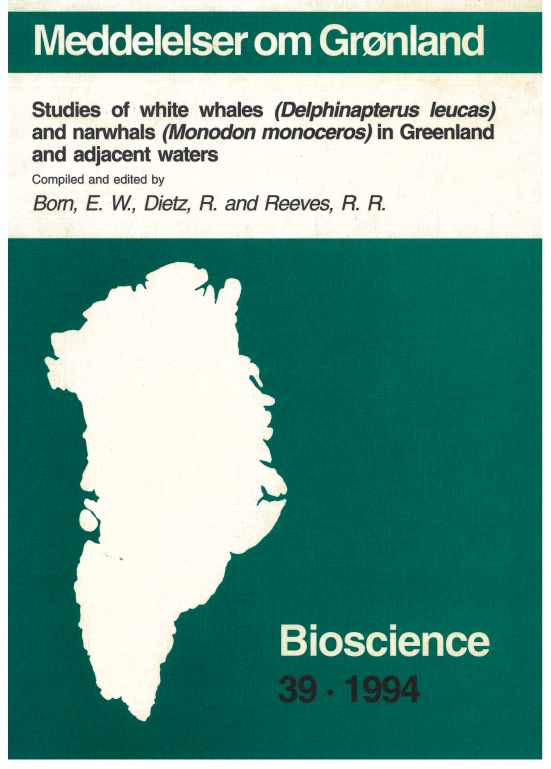Distribution and numbers of narwhals (Monodon monoceros) in Baffin Bay and Davis Strait
DOI:
https://doi.org/10.7146/mogbiosci.v39.142532Abstract
Aerial surveys were conducted over Baffin Bay during May-October 1978-79 and off West Greenland and over southern Baffin Bay, Davis Strait and Hudson Strait during March 1981-82. Narwhals (Monodon monoceros) were dispersed throughout the pack ice in northern Davis Strait and Baffin Bay during late winter and spring and moved into nearshore areas in and adjacent to Lancaster Sound during late June and July.
Important summering areas were identified in Buchan Gulf, Eclipse Sound, Admiralty Inlet, Prince Regent Inlet and Peel Sound, and possibly in Smith Sound and Home Bay, but there was considerable variation in the numbers of narwhals entering these areas each year. Narwhals remained in nearshore areas until late September or early October when they moved south in advance of and with the newly-forming pack ice. During autumn narwhals tended to migrate in large herds, moving both along the coast of Baffin Island and through offshore waters.
Our best estimates of the size of the narwhal population have come from surveys conducted in late spring when the whales are widely dispersed among the offshore pack ice. An estimated 34 363 (± SE 8282) narwhals were present in offshore areas of Baffin Bay that were surveyed four times in May-July 1979. This late spring estimate included narwhals that later summered on both the east and west sides of Baffin Bay and Davis Strait, but excluded animals that summered in northern Hudson Bay. It does not include animals outside the survey area nor is it corrected to account for animals below the surface.
Our aerial survey data indicate that 7.8-9.0% of narwhals in summering areas were calves. An estimate of calving rate is 0.29 calves/adult female/year based on sightings of I-month-old calves without considering mortality between birth and the survey date.
The mortality rate of calves from I month to 13 months of age is estimated as approximately 17%.

Downloads
Published
Issue
Section
License
Coypyright by the authors and the Commision for Scientific Research in Greenland / Danish Polar Center/Museum Tusculanum Press as indicated in the individual volumes. No parts of the publications may be reproduced in any form without the written permission by the copyright owners.

